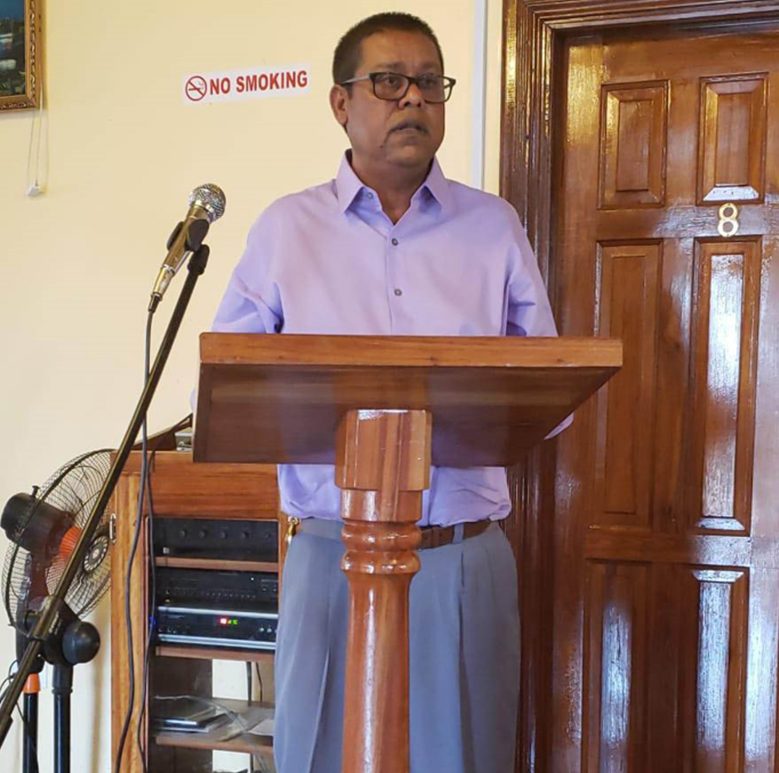There are no indications that the threatened global rice shortage, touted as the likely biggest shortage of its kind in more than two decades is likely to impact on either the availability of rice to local consumers or on existing agreements which the local rice milling company, Nand Persaud and company enjoy with its buyers abroad, Head of the company Mahendra Persaud has told the Stabroek Business.
A week ago, in the Friday May 12 issue of the newspaper, the Stabroek Business reported that an article published in the ……………….had asserted that global rice production for this year was set “to log its largest shortfall in two decades,” attributing the remark to the Analytics Company Fitch Solutions. “At the global level the most evident impact of the global rice deficit has been and still is, decade-high rice prices, a Fitch Solutions Commodities Analyst was quoted as saying, against the backdrop of what he was reported as saying was a strained supply of rice. This, according to the Fitch functionary, was attributable to the ongoing war in Ukraine, as well as weather woes in rice-producing economies like China and Pakistan.
However, speaking with the Stabroek Business on Wednesday, the senior Nand Persaud Company official sought to provide assurances that price rises anywhere else in the world was unlikely to affect Guyana at this time since local farmers were well-positioned to meet demand. A reliable supplier to companies in the Caribbean and elsewhere Persaud added that in the event of a shortage outside of Guyana local rice farmers may even be able to “cash in” by filling the supply holes in the system.
The Berbice rice executive told the Stabroek Business that in the event of a rice shortage elsewhere, Guyana might even be able to “chip in” to help if more lands are brought under cultivation. The rice magnate told the Stabroek Business that should a threat to rice production arise in the immediate term, that threat was almost certain to derive from the fact that the available rice lands have become all but exhausted. There are approximately 58,000 acres of rice land under cultivation in Central Corentyne at this time.
According to Persaud while an additional 17,000 acres of rice lands was due to become available from as far back as the 1970’s under Phase 11 of the Black Bush Polder Rice Project, this has not been realized up to this time.
Persaud told the Stabroek Business that currently, large swathes of land suitable for rice cultivation are available in Region Six, though he added that he could think of no reason why those lands were being released to rice farmers. He also alluded to lands that are available between Crabwood Creek and Ibini in the Berbice River and in Pomeroon and Supernaam.
Meanwhile the rice magnate told the Stabroek Business that he was aware of a number of young persons with rice cultivation ambitions whose ambitions were being suppressed on account of their inability to acquire suitable lands for rice cultivation.
Returning to the issue of rice production Persau8d said that while adverse weather conditions had impacted negatively on rice production last year, the portents arising out of this year’s first crop have been “fair,” a circumstance that suggested that the sector was in “recovery mode” and appeared set to realize a yield of closer to 60 bags per acre rather than the approximately 40 bags per acre that obtains at this time. The prognosis for a higher yield would also become more assured if pest control considerations are taken greater account of.
Estimates of global rice consumption production levels put the number of people who eat rice “every day” at “more than three billion,” asserting that rice makes up 20% of the global dietary energy supply
2023 global rice production statistics put Asian countries well ahead of the rest of the world, naming China, India, Bangladesh and Vietnam as being at the top of the pile.
Last year Guyana’s rice exports earned the country approximately US$185 million, a figure which reportedly fell marginally below the US$191 million earned in 2021.










